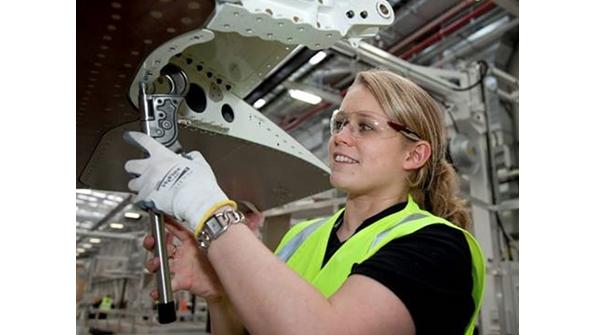
After he took over the CEO reins in 2016, Tom Gentile used to joke that aerostructures leader Spirit AeroSystems of Wichita made everything right the first time, so that it did not need aftermarket revenue.
But that was just a joke, of course, and behind the scenes the Tier 1 keystone parts maker was looking to diversify. In late October, Spirit leapt forward with its acquisition of Bombardier’s Northern Ireland, North African and Dallas-based MRO assets, a deal that will double Spirit’s aftermarket business to 8% of annual revenue as of 2021. Indeed, making the deal happen was so important that Spirit handed over $225 million in cash—almost 10% of its cash on hand after the recent third quarter, when Spirit burned through $72 million, and with little prospect of positive free cash flow until 2022.
“We were very interested in the composite integrated wing for the A220, and the aftermarket,” Gentile said Nov. 12 of the former Bombardier assets. “Those were the key elements of the deal for us.”
Others agree. A slew of recent headlines, public statements from industry executives and consultant reports continue to underpin that aftermarket and MRO exposure are growing drivers of mergers and acquisitions (M&A) in aerospace and defense (A&D). From persistent market speculation about a takeover of Triumph Group—which is trying to shed aerostructures work to focus on being an aftermarket and A&D engineering-services provider—to continued target-hunting by TransDigm Group, Heico and others, the sector is seeing elevated activity.
“We are still actively looking for opportunities that fit our model,” TransDigm CEO Kevin Stein said Nov. 12.
According to Janes Capital Partners, there were 77 A&D M&A deals announced in the recent third quarter. The top three segments in terms of disclosed transaction values were led by MRO and logistics, with $1.3 billion; then satellites and space systems, at $800 million; and defense electronics, at $441 million. MRO and logistics also ranked as one of the leading categories by deal count (see graph).
Part and parcel of increased interest in MRO and aftermarket assets are the challenges the sector faces in the near term as well as its resiliency longer-term. In prior downturns, MRO and aftermarket work remained relatively strong due to the installed base, according to industry consultants. But the COVID-19 crisis is no normal downturn.
“I don’t expect we’re going to see an upturn in aftermarket until sometime next year,” Raytheon Technologies CEO Greg Hayes told analysts Oct. 27. Aftermarket spending has been negatively affected due to lower aircraft utilization and as airlines defer overhauls to conserve cash, with global 2020 MRO spending projected to decline in the range of 40-60%, according to Accenture’s Commercial Aerospace Insight Report, which includes a survey of industry leaders. More than 80% of executives said they expect MRO spending to remain flat or go lower over the next year.
“In the commercial services market, although we believe we’ve seen the low watermark in terms of demand, the recovery has been slow,” Boeing CEO Dave Calhoun said. “We continue to anticipate it will take multiple years to reach previous demand levels. Accelerated retirements will also result in a newer fleet . . . which will reduce services demand and prolong its market recovery.”
For dealmakers, the prolonged downturn presents both risk and opportunity. “You are not going to get rewarded for going too early in a cycle if things are still declining,” said Paul Teske, a co-founder and partner at ATL Partners. Speaking at an A&D forum on private equity investing in A&D in October, he and others warned that no one wants to buy an asset based on pre-pandemic valuations. “We have a lot of debate [as to] where the dust will settle first, aftermarket or OEMs.”
M&A activity is expected to remain elevated as MRO and aftermarket valuations hover in the Goldilocks position for up to a year.
“We see a lot of books coming across our desk,” Heico Chairman and CEO Larry Mendelson said in August. “We think the motivations are probably twofold: One, some companies feel under pressure. They’ve seen their markets shrink and so forth, and they would like to have a strong financial partner.
“The other thing is that the talk of a Biden win and increase of capital gains tax to 43.5% or something like that is really scaring the hell out of a lot of people—including me,” Mendelson continued. “And I must tell you that we are seeing more books than we can handle.”





